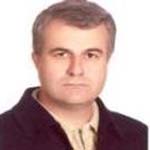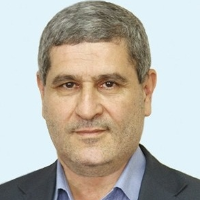دکتر سعید ولدی
-
مقدمه
با توجه به اهمیت بسزای ماهیت چندبعدی محیط خانه در مطالعات رشد بخصوص رشد حرکتی کودکان؛ مطالعه حاضر تاثیر وضعیت اقتصادی - اجتماعی، میزان سابقه ورزشی و سطح فعالیت بدنی والدین بر سطح فراهم سازی حرکتی محیط خانه کودکان را موردبررسی قرار داده است.
روشروش پژوهش با رویکرد مقطعی، از نوع توصیفی و به لحاظ نحوه گردآوری داده ها زمینه یابی بود که در سال 1400 انجام شده است. شرکت کنندگان شامل 236 نفر از والدین (پدر و مادر) دارای کودکان 18 تا 42 ماهه بودند که به روش نمونه گیری خوشه ای چندمرحله ای انتخاب شدند. والدین فعالیت های بدنی و ورزشی خود را برحسب سطح و سوابق رتبه بندی کردند؛ وضعیت اقتصادی-اجتماعی مطابق با سطح درآمد و میزان تحصیلات والدین ارزیابی شد. محیط خانه با استفاده از ترجمه فارسی سیاهه فراهم سازی محیط خانه برای رشد حرکتی (AHEMD) ارزیابی شدند.
نتایجنتایج نشان داد که هیچ رابطه معناداری میان میزان سابقه ورزشی و سطح فعالیت بدنی پدران با نمرات فراهم سازهای حرکتی خانه وجود ندارد. درصورتی که این رابطه، با میزان سابقه ورزشی مادران معنادار بود (r=0.24,p<0.001)؛ و فراهم سازهای حرکتی با میزان سابقه ورزشی مادران تفاوت معناداری داشت (p<0.001، Effect size=11% ). در ادامه یافته ها نشان داد، رابطه معناداری میان سطح فراهم سازهای حرکتی با سطح فعالیت بدنی مادران وجود دارد (Eta=0.21,p<0.05). به علاوه، تفاوت معناداری هم میان فراهم سازهای حرکتی خانه با سطح فعالیت بدنی مادران (p<0.05، Effect size=11% ) وجود دارد. همچنین، شاخص های وضعیت اقتصادی-اجتماعی به میزان 44% تاثیر معناداری بر وجود سطح فراهم سازهای حرکتی خانه بخصوص اسباب بازی های حرکتی درشت و ظریف داشت (P<0.001).
نتیجه گیری:
تنها هرچه میزان سابقه ورزشی و سطح فعالیت بدنی مادران بالاتر باشد (بیش از دو سال) در کنار معیارهای وضعیت اقتصادی-اجتماعی در تهیه و تقویت فراهم سازهای حرکتی محیط خانه برای کودکان نافذ و تاثیرگذارتر است و در بین ابعاد مختلف فراهم سازهای حرکتی دو بعد اسباب بازی های حرکتی درشت و ظریف شدیدا تحت تاثیر شرایط اقتصادی خانواده ها و همچنین سابقه ورزشی مادران می باشد.
کلید واژگان: فراهم سازهای حرکتی, فعالیت بدنی والدین, وضعیت اقتصادی-اجتماعی, محیط خانهIntroductionConsidering the importance of the multidimensional character of the home environment in developmental research, especially the motor development of children, the current study examines the effect of parents' socioeconomic status, sports experience rate, and the level of physical activity on the level of motor affordances.
MethodThe research method with a cross-sectional approach was descriptive, and data collection was a survey that was conducted in 2022. Participants included 236 parents (father and mother) with children aged 18-42 months and were selected by multi-stage cluster sampling. Parents scored their physical and athletic activities based on level and background/experience. Their socioeconomic standing was determined based on their income and education. The home environment was assessed using the Persian version of the Affordances in the Home Environment for Motor Development-Self-Report (AHEMD-SR).
ResultsThe results showed no significant relationship between the rate of sports experience and the level of physical activity of fathers with home motor affordances scores. However, this relationship was significant with the rate of mothers' sports experience (P<0.001, r=0.24), and motor affordances were significantly different from mothers' sports experience (P<0.001, effect size = 11%). The results showed a significant relationship between motor affordances and the mothers' level of physical activity (P<0.05, Eta = 0.21). In addition, there is a significant difference between motor affordances and the mothers' level of physical activity (P<0.05, effect size = 6%). In addition, socioeconomic status indicators had a significant effect of 44% on the level of home motor affordances (P<0.001).
ConclusionOnly the higher the mothers' rate of sports experience and the level of physical activity (more than two years) along with the criteria of socioeconomic status in providing and strengthening home motor affordances for children is more influential and effective. Among the different dimensions of motor affordances, the two dimensions of fine-and-gross motor toys are strongly influenced by the economic conditions of families as well as the sport's history of the mothers.
Keywords: Motor Affordances, Parents' Physical Activity, Socio-Economic Status, Home Environment -
هدف از این پژوهش، بررسی سطح سواد بدنی دانش آموزان هشت تا دوازده ساله بود. روش پژوهش توصیفی و به لحاظ نحوه گردآوری داده ها زمینه یابی و میدانی می باشد. جامعه آماری را کلیه دانش آموزان پایه دوم تا ششم ابتدایی شهر تهران تشکیل دادند. در این پژوهش از روش نمونه گیری خوشه ای - چندمرحله ای استفاده شد و تعداد 284 دانش آموز از میان هشت مدرسه، حاضر به شرکت در این مطالعه شدند. از ابزار سواد بدنی که شامل چهار مقیاس شایستگی جسمانی، فعالیت حرکتی روزانه، انگیزش و اعتمادبه نفس، دانش و درک است، استفاده شد. نتایج، سطح سواد بدنی دانش آموزان را وضعیت ضعیف و ابتدایی نشان داد و مشخص شد که رابطه و تفاوت معناداری میان نمرات سواد بدنی با جنسیت، سن و شاخص توده بدنی وجود دارد؛ به طوری که گروه پسران از سواد بدنی بالاتری برخوردار بودند. با افزایش سن سطح سواد بدنی بهبود یافت که البته این بهبود در مرحله گذر از دوره کودکی پایانی به دوره نوجوانی، کمتر بود. همچنین گروه دانش آموزان با شاخص توده بدنی چاق و اضافه وزن از سواد بدنی کمتری نسبت به دانش آموزان با شاخص توده بدنی متناسب برخوردار بودند. درنتیجه بررسی های انجام شده مشخص شد که دانش آموزان هشت تا دوازده ساله از سطح سواد بدنی قابل قبولی برخوردار نیستند که این مطلب بیانگر آن است که دانش آموزان پایه دوم تا ششم ابتدایی از داشتن سبک زندگی فعال و سالم فاصله دارند و در صورت جدی نگرفتن این مسئله ممکن است سلامت این قشر از جامعه را با خطرهای متفاوت جسمی، روانی و حرکتی در آینده روبه رو کند.کلید واژگان: سواد بدنی, شایستگی جسمانی, دانش و درک, فعالیت حرکتی روزانه, انگیزه و اعتمادبه نفسThe aim of this study was to examine the level of physical literacy for 8-12 years students. The method was descriptive with field studies. The sample included all second to sixth grades in Tehran. 284 students in 8 elementary schools were selected by multistage cluster sampling. Physical Literacy Test with 4 domains of Physical competence, Daily physical activity, Motivation and self-confidence, and Knowledge and understanding was used to collect data. The results showed the low level of physical literacy for students. It was also found that there is a significant difference between the scores of physical literacy with gender, age and body mass index, so that The boys' group had higher physical literacy and As the age increased, the level of physical literacy improved, which was less than the period from the terminal Childhood to adolescence, In addition the students with obesity and overweight BMI had fewer physical literacy than those with a recommended BMI. As a result of the studies, it was found that 8-12 years students do not have an acceptable level of physical literacy. This suggests that second-grade students up to the sixth grade have an active lifestyle and consequently they are far from the active and healthy life style. And if not taking this seriously, this group's health from a society may come with different physical, emotional, psychological and motor health risks in the futureKeywords: Physical literacy, Physical competence, Knowledge & understanding, Daily physical activity, Motivation & confidence
-
مقدمه
به منظور دستیابی به سطح مطلوب رشد حرکتی و شایستگی های جسمانی-روانی و ایجاد یک سبک زندگی سالم و فعال در میان همه افراد جامعه به ویژه خانواده ها و فرزندان قشر نظامی و با توجه به ویژگی های شغلی پدران، نیازمند اصول دقیقی از مهارت های حرکتی و ورزشی هستیم که این اصول سواد بدنی نام دارند.
هدفهدف از پژوهش حاضر، تعیین رابطه میان سطح سواد بدنی کودکان 8-12ساله با برخی از ویژگی های شغلی پدران نظامی آن ها بود.
مواد و روش ها:
روش تحقیق توصیفی- میدانی و از نوع همبستگی است؛ که در آن با استفاده از روش نمونه گیری خوشه ای چندمرحله ای، 171 نفر از کودکان 8-12ساله در مناطق 1، 4، 8 و 13 شهر تهران در نسخه ایرانی آزمون ارزیابی سواد بدنی که شامل چهار خرده مقیاس شایستگی جسمانی، فعالیت بدنی روزانه، انگیزش و اعتماد به نفس، دانش و درک است، شرکت کردند. پدران نیز پرسشنامه ای حاوی سوالات مربوط به ماهیت شغلی، رسته شغلی و تحصیلات را تکمیل کردند. یافته های تحقیق با استفاده از شاخص های آمار توصیفی، ضریب همبستگی اتا، آزمون تی-مستقل و تحلیل کوواریانس یک راهه تحلیل شد از نرم افزار SPSS نسخه 23 جهت تحلیل داده ها استفاده شد.
یافته ها:
سواد بدنی فرزندانی که ماهیت شغلی پدرانشان ستادی است بیشتر از آنانی است که ماهیت شغلی پدرانشان صفی است (P<0.01, t = -4.558, Effect size=0/36). همچنین سواد بدنی گروهی از فرزندان که رسته شغلی پدرانشان آموزشی است، بیشتر از گروهی است که رسته شغلی پدرانشان عملیاتی است (0/05=P).
بحث و نتیجه گیری:
سواد بدنی با ویژگی های شغلی پدران نظامی مرتبط است. ویژگی های شغلی می تواند بر سبک زندگی فعال کودکان تاثیرگذار باشد. دانستن این ارتباط در بهبود سواد بدنی فرزندان خانواده های نظامی موثر است و به نظر می رسد لزوم اجرای برنامه های حرکتی و ورزشی مناسب جهت افزایش سواد بدنی این کودکان به ویژه برای دختران ضروری است. همچنین مطالعات بیشتر در خصوص تاثیرگذاری عوامل دیگر بر سواد بدنی پیشنهاد می گردد.
کلید واژگان: پرسنل نظامی, سواد سلامتی, رفتار سالم, فعالیت بدنی, کیفیت زندگیIntroductionTo achieve a desirable level of motor development and physical-mental competencies and develop a healthy and active lifestyle in all people in society, particularly children and families of the military and considering the nature of job their fathers’ job, accurate principles on motor and exercise skills, called physical literacy principles, is required.
ObjectivePresent study aimed to determine the relationships between the levels of the physical literacy of children in the 8-12 age range with some natures of their military fathers’ job.
Materials and MethodsThe method is a descriptive-correlation in which a total of 171 children in the 8-12 age range were selected by multi-stage cluster sampling in districts 1, 4, 8 and 13 of Tehran and the Iranian version of the physical literacy test consisting of 4 subscales such as physical competence, daily physical activity, motivation and self-confidence, and knowledge and understanding was administered Further, Fathers completed a questionnaire about their occupational nature, corps, and their level of education. Findings were analyzed using descriptive statistics, ETA correlation coefficient, t- independent test, and one-way covariance analysis. Data were analyzed using SPSS 23.
ResultsThe physical literacy of children with staff fathers was more than those with father in the troop (Effect size=0.36, t = -4.558, P<0.01).. Furthermore, the physical literacy of children with fathers working in educational-section was greater than those whose fathers work in operational section (P= 0/05).
Discussion and ConclusionChildrenchr('39')s physical literacy is related to the occupational nature of military fathers. These job natures can affect the childrenchr('39')s active lifestyles. Knowing this relationship affects the physical literacy of children in military families and the implementation of appropriate movement and sports programs is needed to increase the physical literacy of these children, especially among girls. Further studies on the impact of other factors on physical literacy should be conducted.
Keywords: Health Literacy, Health Behavior, Life Quality, Military Personnel, Physical Activity
- این فهرست شامل مطالبی از ایشان است که در سایت مگیران نمایه شده و توسط نویسنده تایید شدهاست.
- مگیران تنها مقالات مجلات ایرانی عضو خود را نمایه میکند. بدیهی است مقالات منتشر شده نگارنده/پژوهشگر در مجلات خارجی، همایشها و مجلاتی که با مگیران همکاری ندارند در این فهرست نیامدهاست.
- اسامی نویسندگان همکار در صورت عضویت در مگیران و تایید مقالات نمایش داده می شود.






